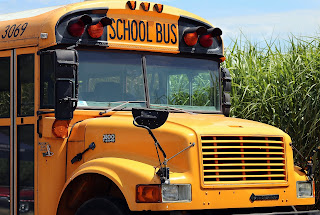Education is a fundamental right for every child, regardless of their geographical location. However, in Jamaica, the pursuit of education is often hindered by a significant challenge: inadequate transportation. The picturesque island nation faces unique obstacles that affect the ability of school children to access quality education. This article explores the various challenges faced by Jamaican school children due to insufficient transportation infrastructure and offers potential solutions to address this pressing issue.
1. Geographical Disparities
One of the primary challenges faced by school children in Jamaica is the geographical disparities that exist across the island. Jamaica's rugged terrain, coupled with its scattered population centers, makes it difficult for many children to reach school. In rural areas, children often live in remote villages or on hillside farms, far from the nearest school. In contrast, urban areas tend to have better access to educational facilities and public transportation.
2. Limited Public Transportation
Public transportation in Jamaica, particularly in rural areas, is often unreliable and insufficient. The majority of school children depend on public buses, route taxis, or private cars to get to school. Unfortunately, these modes of transportation are not always available or affordable. Buses and route taxis may run infrequently or not at all in some areas, leaving children with no choice but to walk long distances or miss school altogether.
3. Safety Concerns
The safety of school children is another significant concern associated with inadequate transportation in Jamaica. Walking long distances to school on poorly maintained roads can expose children to various dangers, including traffic accidents and encounters with wildlife. In addition, some rural areas are known for having higher crime rates, which further exacerbates safety concerns for students who must travel to school.
4. Financial Burden on Families
For many families in Jamaica, the cost of transportation is a significant financial burden. The country's economic challenges, including high unemployment rates and low wages, make it difficult for parents to afford the transportation expenses associated with sending their children to school. Purchasing bus tickets, hiring route taxis, or maintaining a private car can strain already limited household budgets.
5. Irregular School Attendance
Inadequate transportation often results in irregular school attendance among Jamaican children. When transportation options are limited or unreliable, students may miss school frequently. This irregular attendance can have a detrimental impact on their academic performance and overall educational outcomes. Education is a pathway to breaking the cycle of poverty, and any hindrance to regular attendance can perpetuate socio-economic disparities.
6. Impact on Educational Quality
The lack of reliable transportation affects not only school attendance but also the quality of education itself. In some cases, schools in remote areas struggle to attract qualified teachers due to the difficulty of reaching these locations. Consequently, students in rural areas may have limited access to experienced educators and necessary resources, further widening the educational gap between urban and rural regions.
7. Gender Disparities
Inadequate transportation can also disproportionately affect girls in Jamaica. Cultural norms and safety concerns may lead parents to restrict their daughters' mobility, preventing them from accessing education. As a result, girls may face greater obstacles in attending school regularly and achieving academic success.
Solutions to Address the Challenges
Addressing the challenges faced by school children in Jamaica due to inadequate transportation requires a multi-faceted approach involving government intervention, community efforts, and collaboration with international organizations. Here are some potential solutions:
1. Improved Public Transportation
Investing in a more extensive and reliable public transportation system, particularly in rural areas, is crucial. The government should allocate resources to expand bus routes, improve road infrastructure, and ensure that transportation services are affordable and accessible to all.
2. School Transportation Programs
Implementing dedicated school transportation programs can help alleviate the financial burden on families. These programs can offer subsidized or free transportation to students in need, ensuring that no child misses school due to transportation costs.
3. Safe Walking Routes
To address safety concerns, communities and local authorities should work together to create safe walking routes to schools. This may involve the construction of sidewalks, pedestrian crossings, and the installation of streetlights to protect students during their commute.
4. Community Engagement
Engaging communities in finding transportation solutions is vital. Local residents, parents, and community leaders can collaborate to organize carpools, establish neighborhood watch programs, and advocate for improved transportation infrastructure.
5. Scholarships and Incentives
To encourage regular school attendance, scholarships and incentives can be offered to students who demonstrate consistent attendance and academic progress. These initiatives can motivate students to overcome transportation challenges and stay committed to their education.
6. Technology Integration
Leveraging technology, such as mobile apps for transportation scheduling and tracking, can help improve the efficiency and reliability of transportation services. These apps can provide real-time updates on bus schedules, making it easier for students to plan their journeys.
7. Gender Equity Initiatives
Efforts should be made to promote gender equity in education. This includes raising awareness about the importance of girls' education, addressing safety concerns, and providing support to families to ensure that both boys and girls have equal access to education.
Conclusion
The challenges faced by school children in Jamaica due to inadequate transportation are significant barriers to accessing quality education. Geographical disparities, limited public transportation, safety concerns, financial burdens, irregular school attendance, and gender disparities all contribute to this complex issue. However, by implementing a combination of improved public transportation, community engagement, safety measures, and targeted incentives, Jamaica can work towards ensuring that every child has the opportunity to receive a quality education, regardless of where they live on this beautiful island. Investing in the education of Jamaica's youth is an investment in the nation's future prosperity and development.






No comments:
Post a Comment